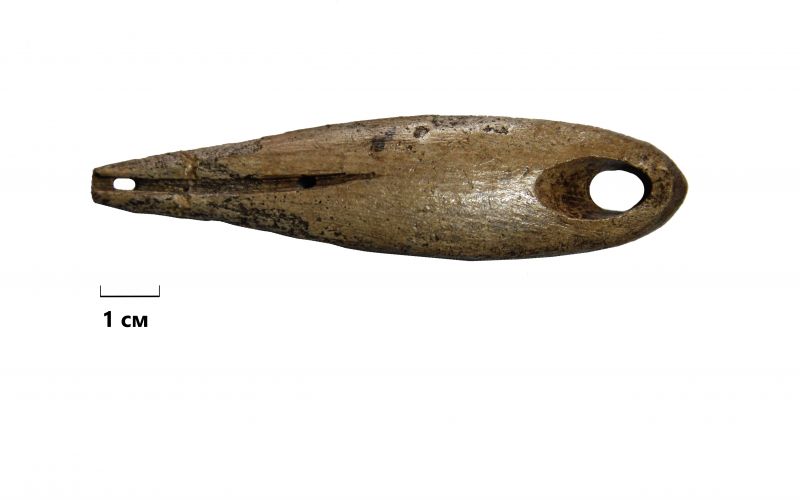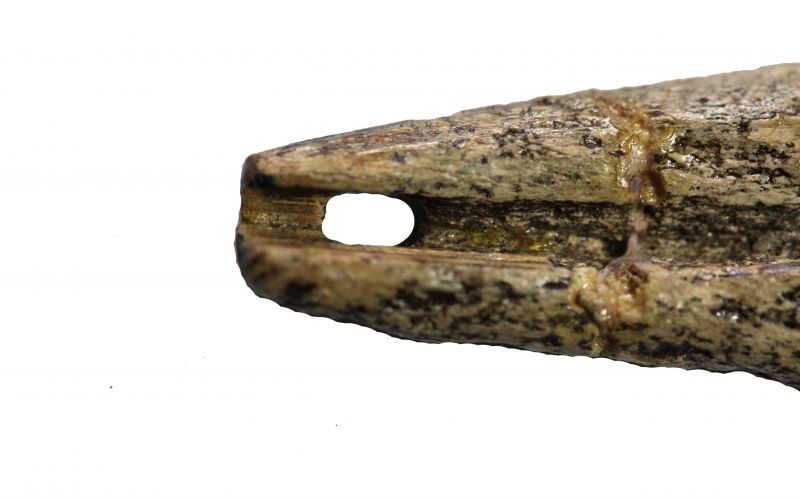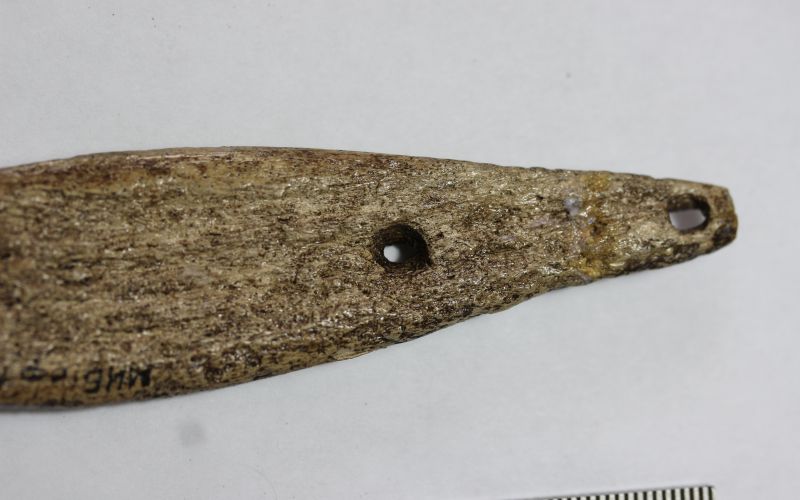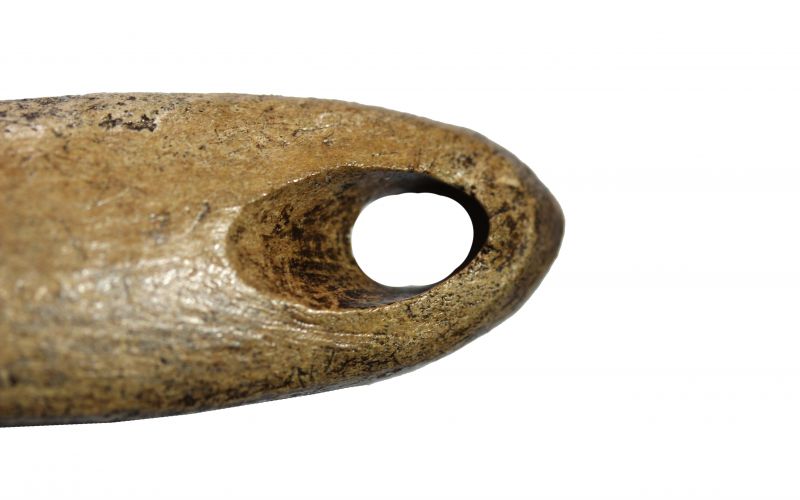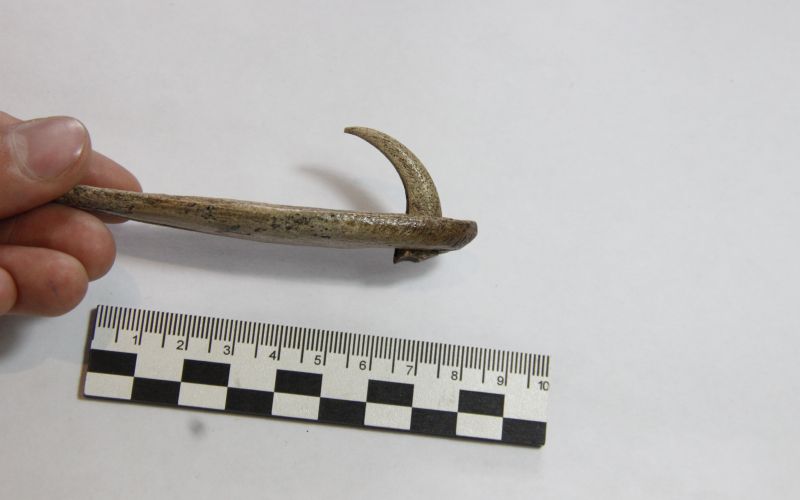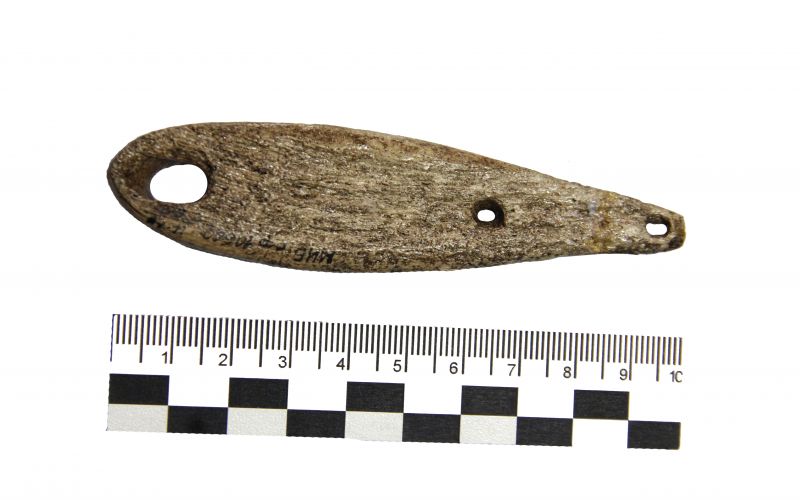Fishing lure
A fishing lure with a hook has a drop-like shape and three different conical holes. The largest hole is for a hook. Two smaller sub-round holes are for fishing line.
The fishing lure and the hook were found in the burial №3.
Manufacturing technique
Cutting, planning, drilling, polishing
The holes are cut from two sides with a burin or a knife along the axis line of the item. Two smaller holes are made with a stone reamer from the back spongy side. The holes are coming out in the non-deep face slot which is cut in the upper part of a narrowed area of the fishing lure. The slot is made with a cutting tool. On the edges, there are traces of shear. They are forming the contour.
Use-wear traces
The bear claw has traces of light polishing. In the bottom part of the hook hole, there is a deforming area which could appear after permanent pressure on this part of the fishing lure.
Storage location
The Museum of Buryat History named after Khangalov M.N.Inventory number
10600Size
Length - 100,09 mm
Width - 24,70 mm
Thickness - 6,77 mm
Material
AntlerDating
V-IV millennium BCCulture
NeolithicThe author of the excavations
Ivashina L.G.1970
Publications
Ivashina L.G. Neolit i eneolit lesostepnoj zony Buryatii. Novosibirsk / AN SSSR. Sib. otd-nie. Buryat. fil. Buryat. in-t obshchestv. nauk. - VO "Nauka". - 157 S.
